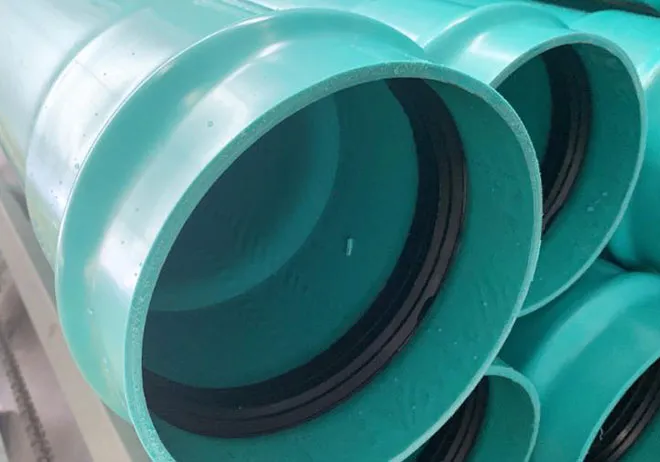Nov . 06, 2024 04:24 Back to list
High-Quality 25mm PPR Pipe Manufacturer for Reliable Plumbing Solutions
Understanding the Production of 25mm PPR Pipes A Dive into Factory Processes
In today's rapidly advancing world, the demand for reliable and efficient piping systems is more crucial than ever. One material that has gained significant popularity in plumbing and construction is Polypropylene Random Copolymer (PPR). Among the various sizes available, the 25mm PPR pipe is particularly favored for its versatility and durability. This article explores the intricacies of how these pipes are manufactured in a factory setting, highlighting the technology, processes, and benefits associated with them.
What is PPR?
Polypropylene Random Copolymer (PPR) is a type of thermoplastic that is known for its resistance to chemicals, high temperatures, and pressure. This makes it an excellent choice for a wide range of applications, including hot and cold water supply systems, heating installations, and even industrial applications. The 25mm size is optimal for residential and commercial plumbing, providing an effective flow rate suitable for various needs.
PPR Pipe Manufacturing Process
The process of manufacturing PPR pipes involves several critical steps, each playing a vital role in ensuring the final product meets rigorous quality standards.
1. Material Selection The first step in the manufacturing process is selecting high-quality raw materials. For PPR pipes, this typically involves sourcing polypropylene resin, which is known for its durability and resistance to environmental stressors.
2. Extrusion Process The core of pipe production lies in the extrusion process. In a factory, the polypropylene resin is fed into an extruder, where it is heated and melted. This molten plastic is then forced through a mold to form a continuous pipe. The 25mm diameter is achieved through precise calibration of the mold and extrusion speed.
3. Cooling After the pipe is extruded, it needs to cool down before it can be cut into specific lengths. This is typically done using a water bath, where the newly formed pipe is submerged to rapidly reduce its temperature, allowing it to solidify without warping.
25mm ppr pipe factory

4. Cutting and Finishing Once cooled, the pipe is cut into standard lengths, which are commonly 4 meters but can be adjusted based on customer needs. Following this, any rough edges are smoothed out to ensure a safe and easy installation process.
5. Quality Control Quality assurance is a non-negotiable step in the manufacturing of 25mm PPR pipes. Factory settings implement rigorous testing protocols, including pressure testing, to ensure that each pipe can withstand operational demands. Factors like dimensional accuracy and the absence of defects are thoroughly checked.
6. Packaging and Distribution After passing quality control, the pipes are packaged for distribution. This often involves grouping the pipes in bundles and preparing them for shipping. Factories strive to ensure that the packaging protects the pipes from damage during transportation.
Advantages of 25mm PPR Pipes
The choice of 25mm PPR pipes offers multiple advantages. Firstly, their lightweight nature makes them easy to handle and install, reducing labor costs. Secondly, PPR pipes are known for their longevity, often lasting over 50 years with proper usage. Additionally, they exhibit excellent resistance to thermal expansion and contraction, making them suitable for environments with significant temperature fluctuations.
Moreover, PPR pipes are non-toxic and do not leach harmful chemicals into water supplies, making them a safe choice for potable water systems. Their smooth inner walls also ensure minimal friction and better fluid flow, which increases overall efficiency in plumbing systems.
Conclusion
The manufacturing process of 25mm PPR pipes involves a sophisticated series of steps, from material selection to quality control. By understanding these processes, stakeholders in the construction and plumbing industries can appreciate the significance of these pipes in modern infrastructure. As the world leans more towards sustainable and reliable building materials, PPR pipes stand out as a superior choice, promising durability, safety, and efficiency. Whether for residential, commercial, or industrial use, the continued evolution in their manufacturing is likely to support the ongoing demand in various applications, solidifying their role in the future of piping systems.
-
High-Quality PVC Borehole Pipes Durable & Versatile Pipe Solutions
NewsJul.08,2025
-
High-Quality PVC Perforated Pipes for Efficient Drainage Leading Manufacturers & Factories
NewsJul.08,2025
-
High-Quality PVC Borehole Pipes Durable Pipe Solutions by Leading Manufacturer
NewsJul.08,2025
-
High-Quality PVC Borehole Pipes Reliable PVC Pipe Manufacturer Solutions
NewsJul.07,2025
-
High-Quality UPVC Drain Pipes Durable HDPE & Drain Pipe Solutions
NewsJul.07,2025
-
High-Quality Conduit Pipes & HDPE Conduit Fittings Manufacturer Reliable Factory Supply
NewsJul.06,2025

